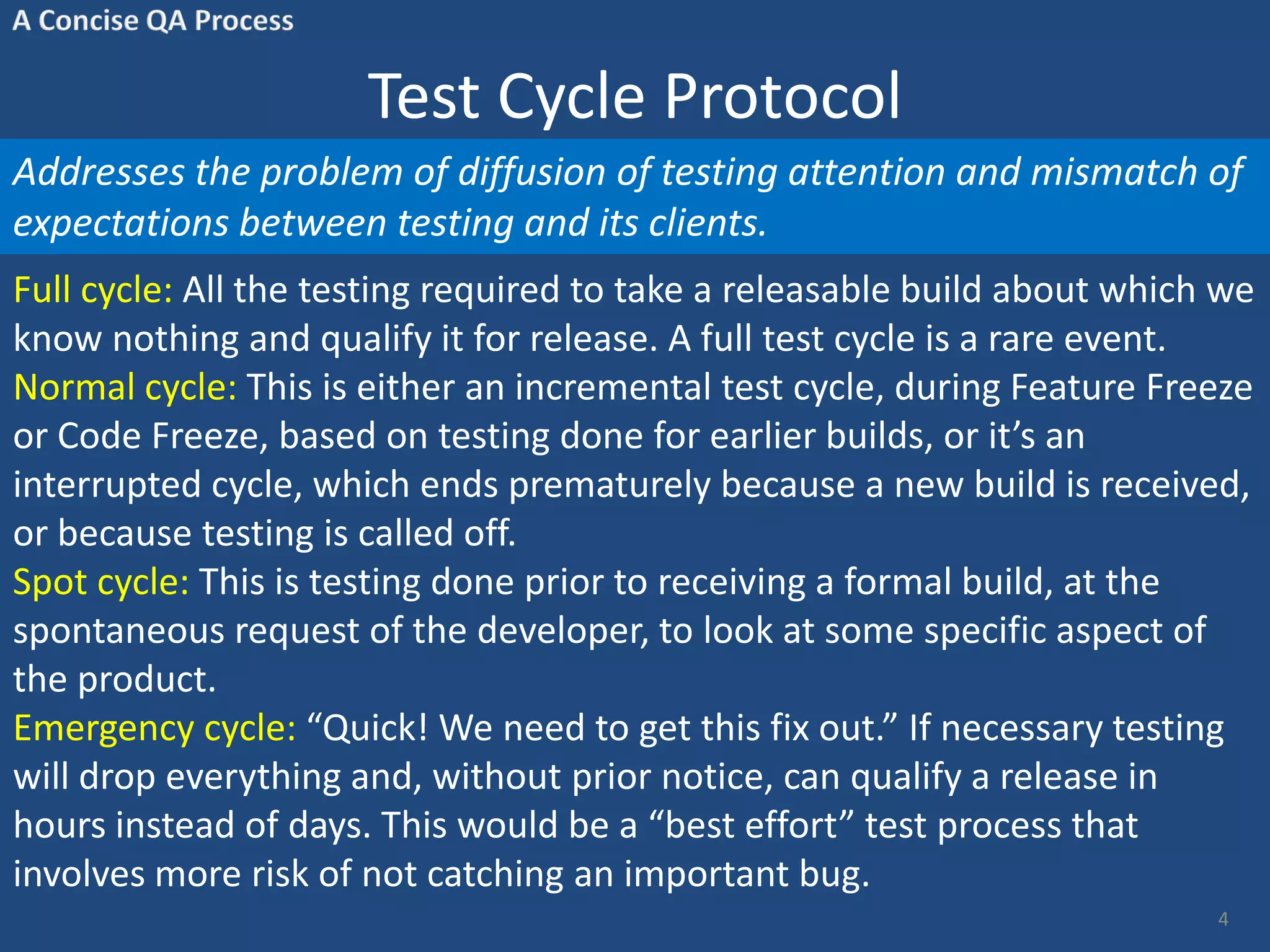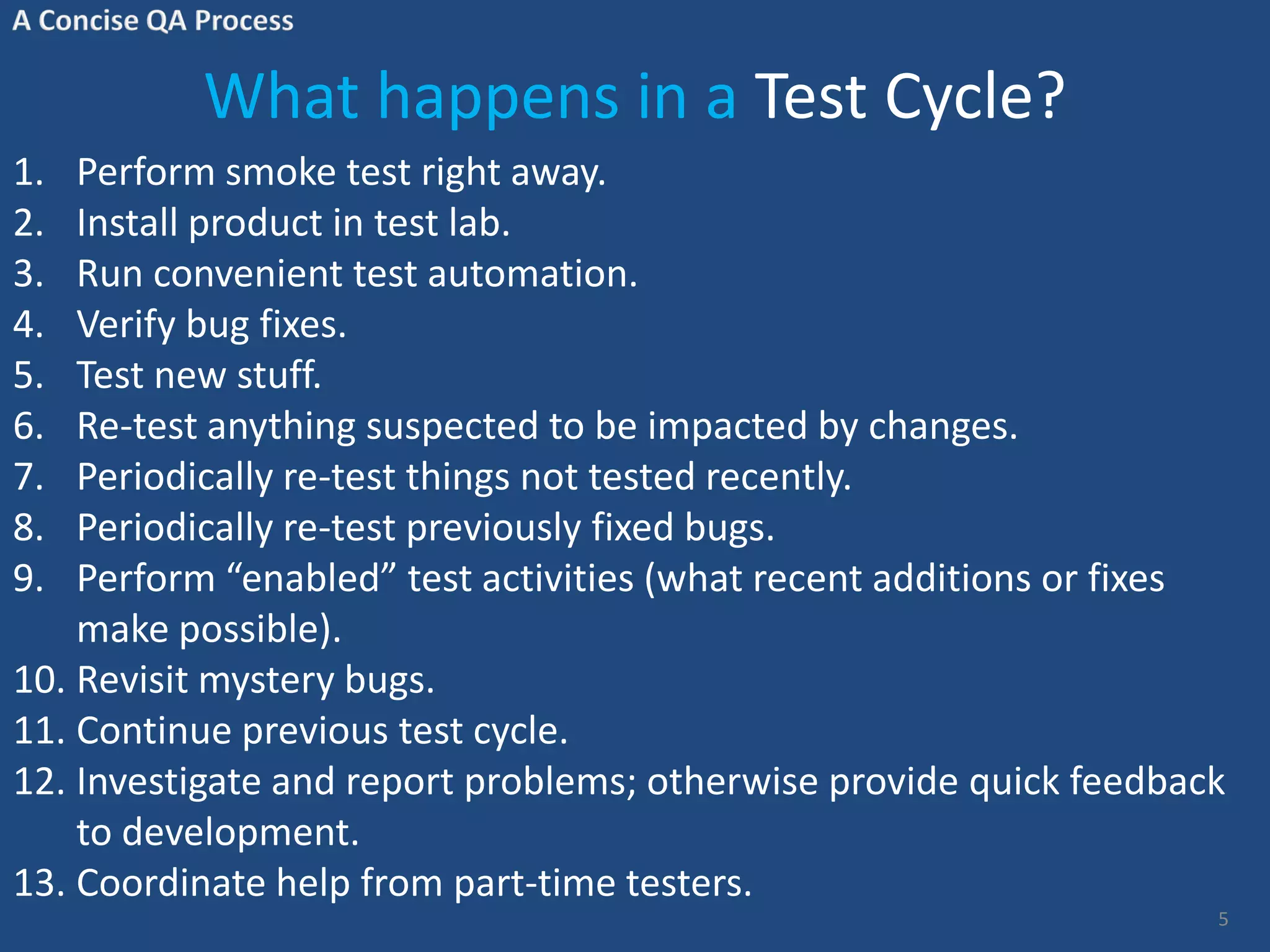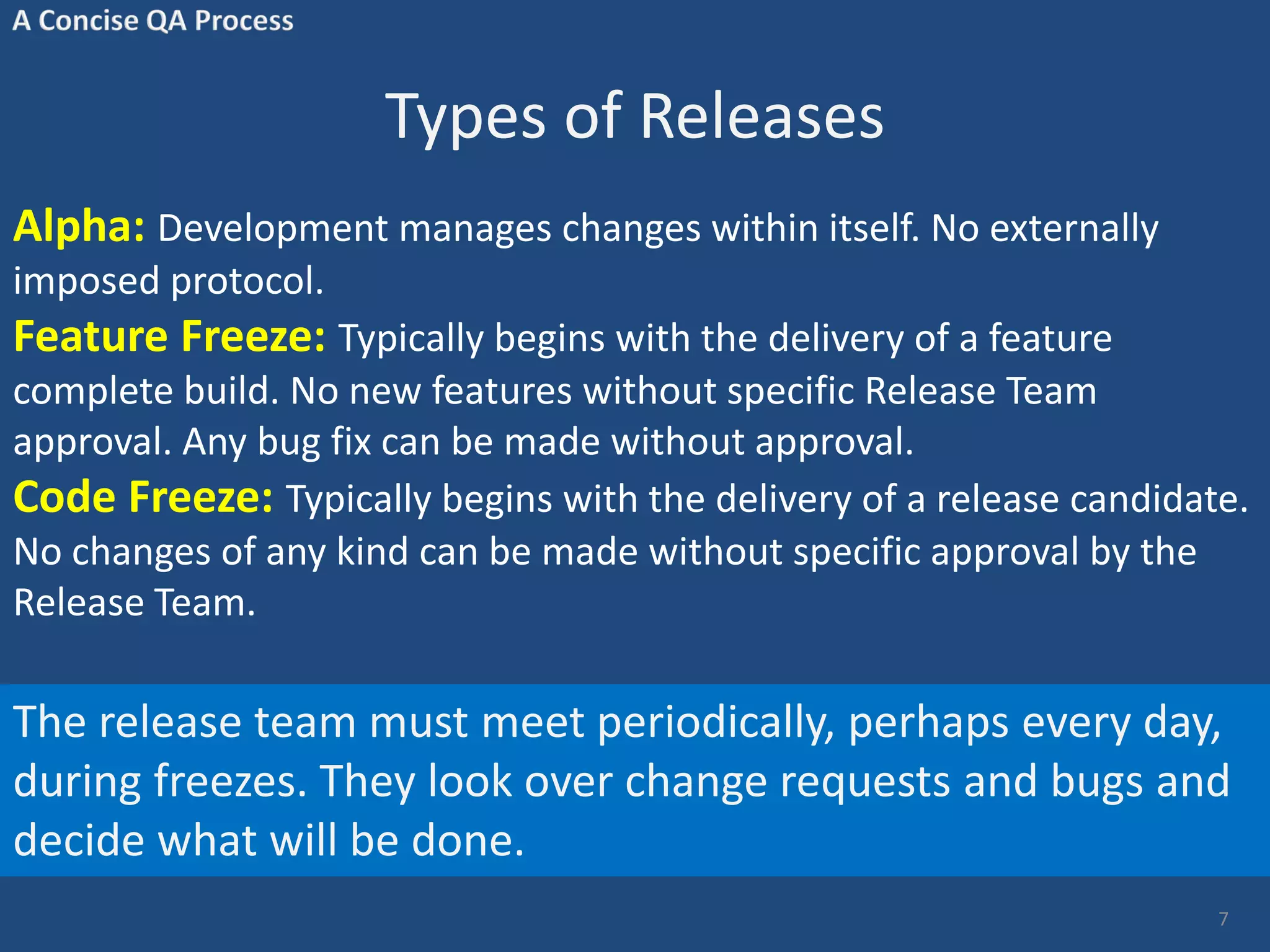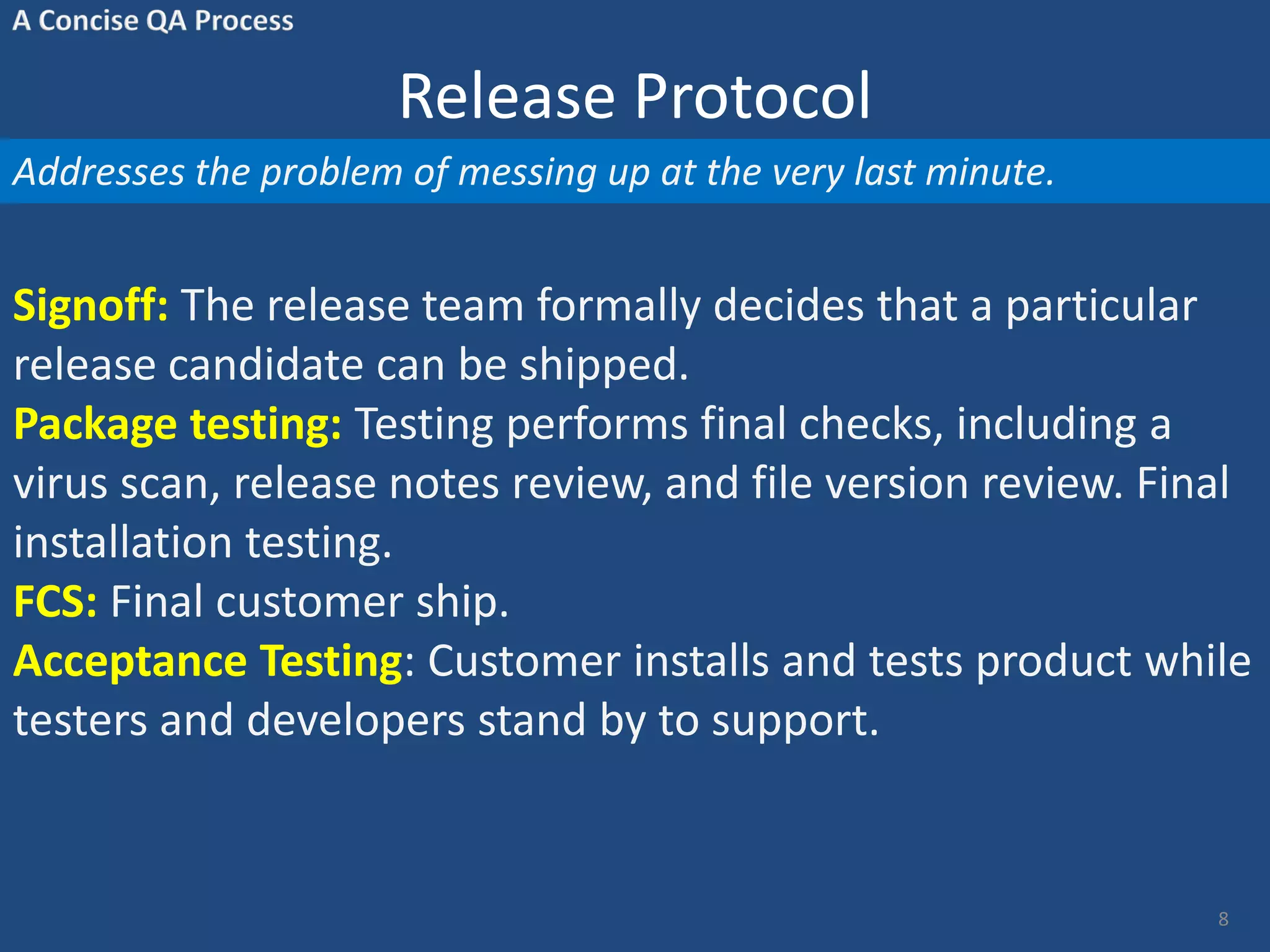This document summarizes a concise QA and testing process developed for a small startup. It includes protocols for building, testing, managing changes, and releasing software. The build protocol ensures testing receives builds and information about changes. The test cycle protocol defines different types of testing cycles. The change protocol establishes feature freezes and code freezes to control changes late in development. The release protocol details the release approval and packaging process.
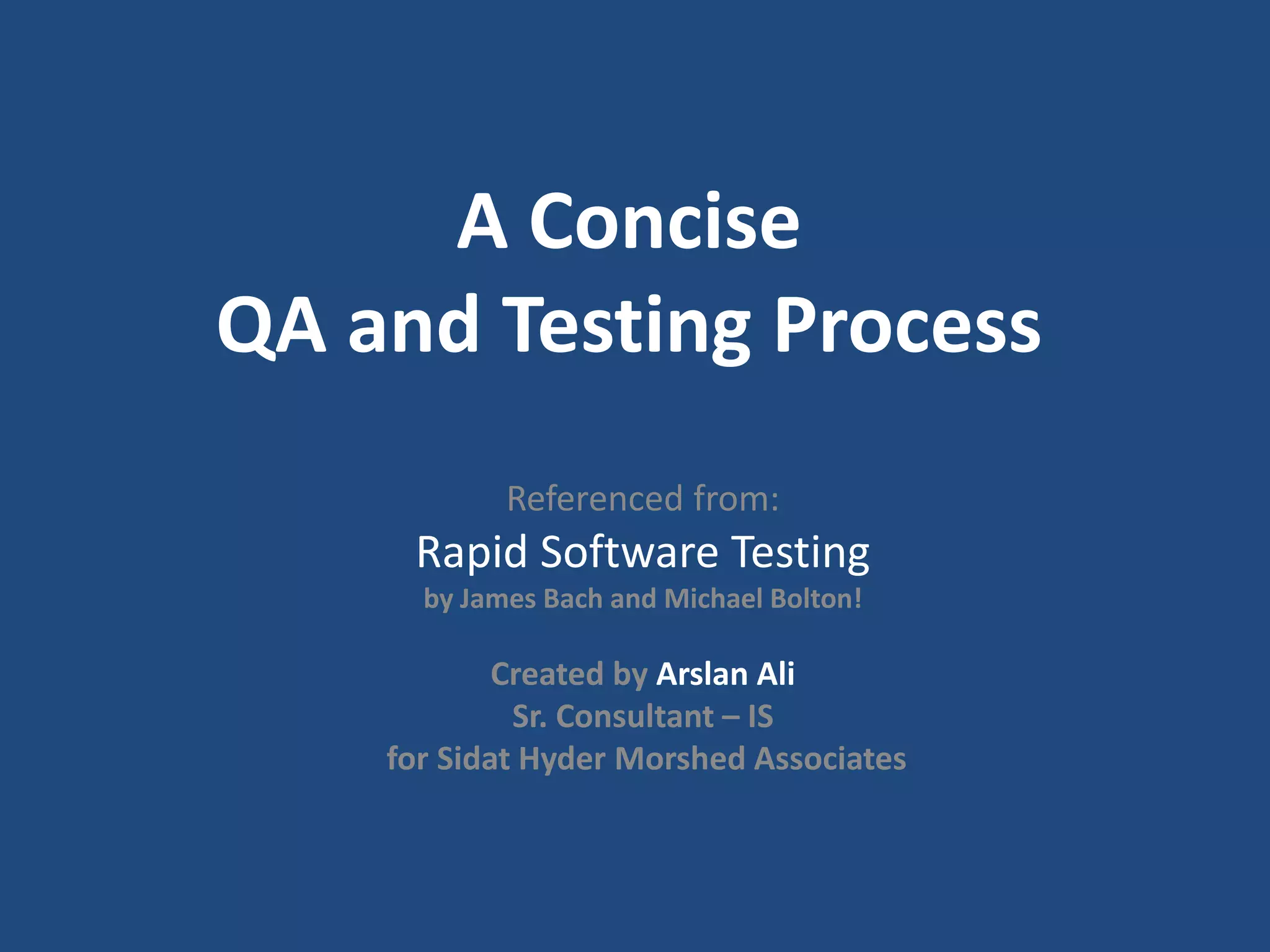
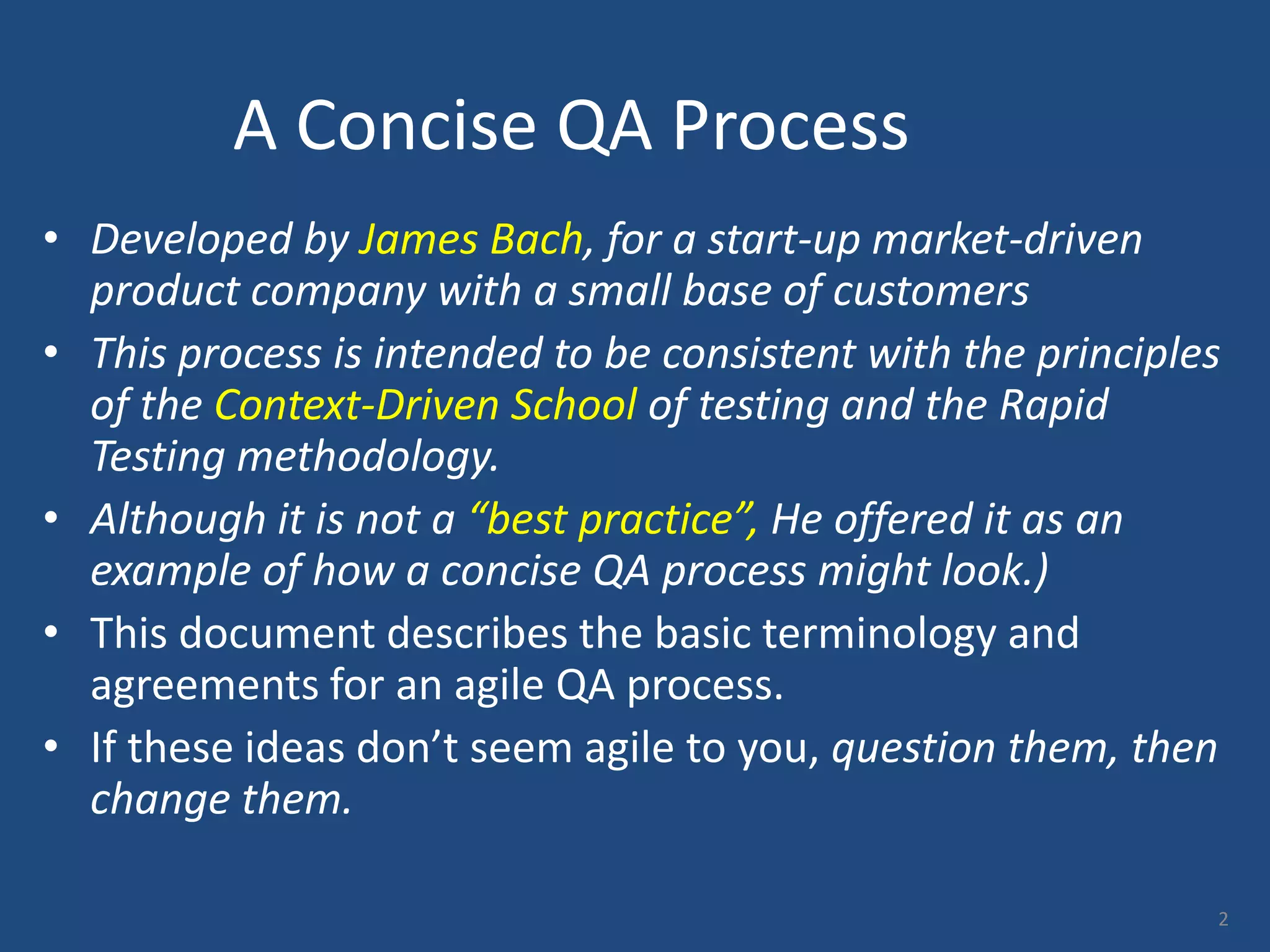
![Build Protocol Addresses the problem of wasting time in a handoff from development to testing. 1. [When time is of the essence] Development alerts testing as soon as they know they’ll be delivering a build. 2. Development sends testing at least a bullet list describing the changes in the build. 3. Development is available to testers to answer questions about fixes or new features. 4. Development updates bug statuses in the bug tracking system. 5. Development builds the product based on version controlled code, according to a repeatable build process, stamping each build with unique version number. 6. When the build is ready, it is placed on the server. 7. Testing commits to reporting sanity test status within one hour of build delivery. 3](https://image.slidesharecdn.com/aconciseqaprocess-150108011313-conversion-gate01/75/A-Concise-QA-Process-3-2048.jpg)
